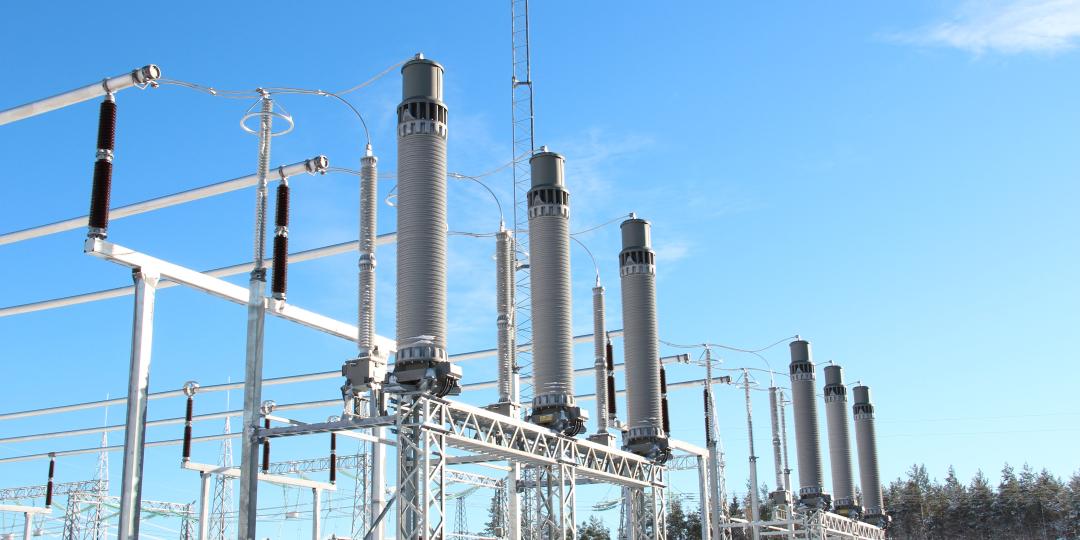Information from Končar
Power voltage transformers (PVTs) are special hybrid instrument transformers which incorporates features of a single-phase inductive voltage instrument transformer with that of a distribution power transformer to offer a compact, reliable power source [1]. Via that direct energy transfer, the distribution grid is bypassed entirely. This eliminates the necessity for the intermediate transformation of power, consequently removing the related costs of primary and secondary equipment as well as the costs of the corresponding infrastructure.
Therefore, the main application of such transformers is power supply of auxiliary systems and services within a substation or remote industrial consumers (communication towers and antennae, mines, pump stations). Furthermore, PVTs can be one of the most economical solutions for rural electrification. They can act as a reliable power source to allow rural communities access to electricity. Additionally, they are used as a backup option for temporary supply for local consumers during substation construction.
Končar PVT is a line-to-ground connected single-phase transformer which can be used as a single unit or in a three-phase bank to power loads. The single-phase units are used for direct transformation of power from high, transmission level voltages of up to 550 kV (1800 kV BIL) to low voltage according to customer requirements (typically between 120 V and 1000 V). With that in mind, the rated power of such units spans from 10 to 333 kVA single-phase or 1 MVA three-phase. An example of such a unit, used for auxiliary supply in a substation is given in Figure 1.

Končar PVTs are unique in design due to their open core, the main characteristic being that the main flux is partially closed through the non-magnetic material, meaning that an air gap is inherently present in the main magnetic circuit [2]. The main flux path is dictated by the flux-directing yoke, which forces the flux path towards the immediate vicinity of the main core limb [2]. PVTs enclosures consists of the base assembly, insulator, heat sink, bellows and bellows cover. The design allows PVTs to achieve minimal oil volume. The active part of the transformer is located inside the insulator. As per client request, external insulation can be either porcelain or composite. Porcelain insulators are made of the highest quality C130 aluminous porcelain, while the composite insulators are made from a glass-fibre reinforced resin tube with silicone rubber sheds.
Main benefits of an open-core design
The air gap in the open-care concept offers two main benefits: ferroresonance immunity [5] and a decrease in inrush current.
Other benefits result from the absence of the return core limbs which allows for a different insulation system concept including a sectioned primary winding. This high-quality paper-oil main insulation design solution ensures a better distribution of overvoltages at any frequency and a lower overall dielectric stress in the main insulation. This satisfies the insulation requirements for higher voltage levels (245 kV and above) [3]. This feature also effectively localises a fault on one segment of the active part, thereby limiting the energy under internal fault conditions and making the PVTs explosion safe [4]. All these benefits allow for a more fail-safe operation and remove occurrences which could potentially cause transformer faults.
The secondary power winding can be serial-parallel reconnectable, offering one or two power windings for individual use - serial, parallel or open delta connections. Additional metering or relaying windings with various accuracy options can be added [6].
Off-load tapping can be provided on either the secondary or the primary winding. In both cases, the tap connections are available in the secondary terminal box. The tap positions are defined by the voltage level and are performed manually inside the secondary box. Additionally, the secondary box can be equipped with a low voltage fuse or circuit breaker, and probes for continuous thermal measurement and internal overpressure.
Every transformer is equipped with an oil sampling valve, oil level indicator and a terminal for dielectric dissipation factor (tgδ) measurement.
The single identifying property of these transformers is that they are built under the technological principles of instrument transformers rather than their power or distribution transformer counterparts [1]. Thus, they still designed, produced and tested according to the requirements of IEC and IEEE standards.
Conclusion
Open-core PVT are a practical solution for an auxiliary supply for substations or remote consumers. They offer advantages which support the maintenance free philosophy, but also up the ante, meaning that, due to their explosion safety, ferroresonance immunity and other characteristics, can truly be labelled as “install-and-forget” units which have been proven to operate reliably under all conditions.
Furthermore, these advantages make substation design simpler and more financially attractive. Therein lies the potential for a more widespread use of PVTs as primary units for power supply and distribution to remote areas in the vicinity of overhead power lines.
References
[1] I Žiger, D Krajtner, Z Ubrekić and M. Brkić: “Design of the Open-core Power Voltage Transformers”, International Colloquium Transformer Research and Asset Management, Dubrovnik, Croatia, May 2012.
[2] I Žiger, B Bojanić, D Krajtner: “Open-core Power Voltage Transformers: Concept, Properties, Application “, IEEE Energycon 2014, Cavtat, Croatia, May 2014.
[3] M Poljak: “Insulation System of Combined Instrument Transformers “, Ph.D. Dissertation, Faculty of Electrical Engineering and Computing, Zagreb, Croatia, 2006.
[4] I Žiger, B Bojanić, D Krajtner: “Internal fault performance of instrument transformers with sectioned active part”, 5th International Colloquium on Transformer Research and Asset Management, 2019.
[5] I Žiger, D Krajtner: “Influence of HV inductive voltage transformers core design to the ferroresonance occurrence probability”, International Conference on Power Systems Transients (IPST2015) in Cavtat, Croatia, June 2015.
[6] I Žiger, D Papić, M Čukman: “Accuracy Performance of Power Voltage Transformers”, Mediterranean Conference on Power Generation, Transmission, Distribution and Energy Conversion, Dubrovnik, Croatia, November 2018.
Contact Stan Kolenic (PrEng), Otok Consulting Enterprise, stanko@telkomsa.net















